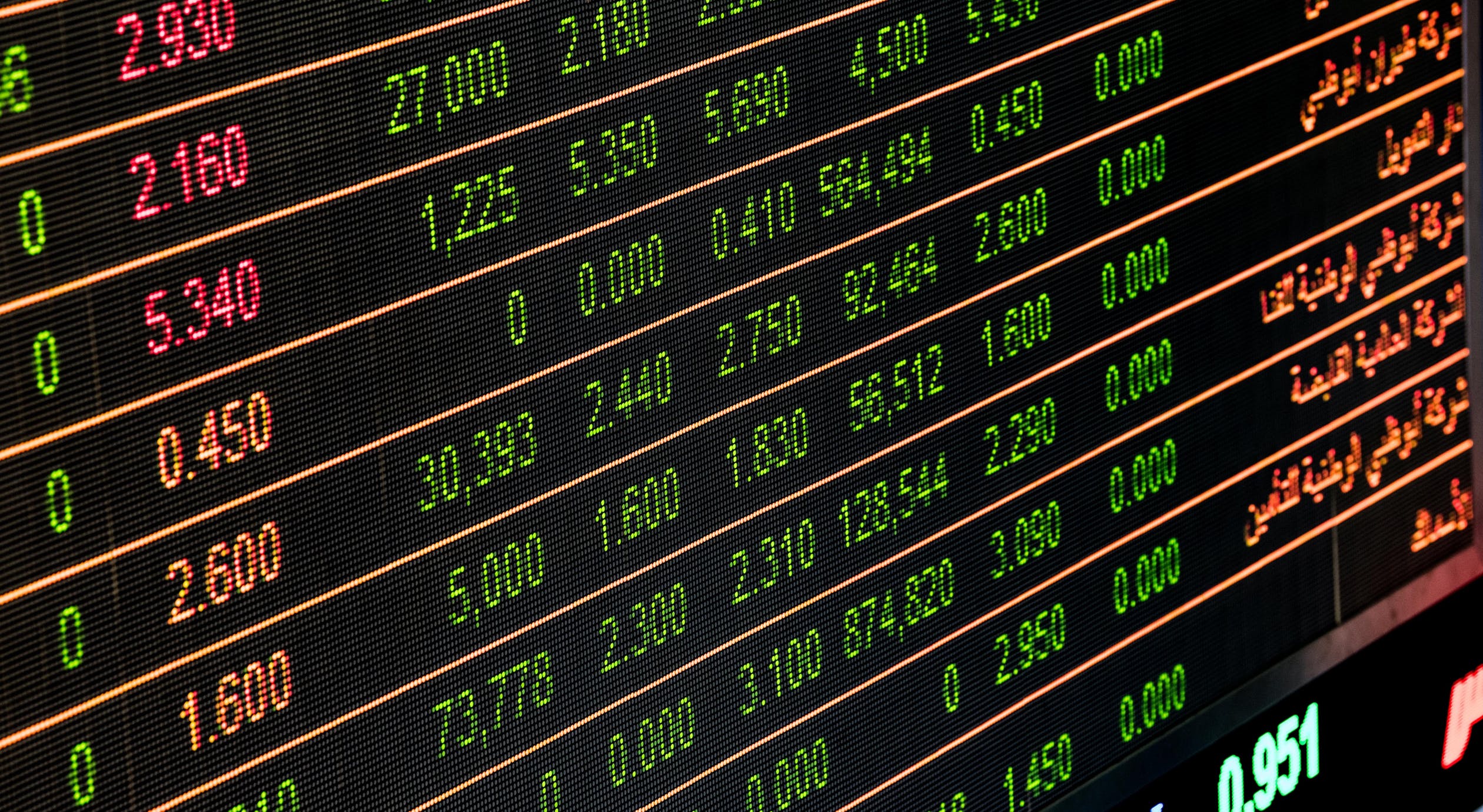Economic update – March 2023
By Infocus Author
In this month’s update, we provide a snapshot of economic occurrences both nationally and from around the globe.
Key points:
– The big fear of central bankers is a wage price spiral, this is not happening
– Recession fears are rising but China turning on again may help Australia dodge the bullet
– February sees some unwinding of the stellar equity market performance in January
We hope you find this month’s Economic Update as informative as always. If you have any feedback or would like to discuss any aspect of this report, please contact our team.
The Big Picture
If January was a month of unbridled optimism in equity markets, February witnessed a big reality check.
Both the ASX 200 and the S&P 500 went up 6.2% in January which is slightly more than the historical average gain in a whole year on these indexes over a lengthy period.
The market was pricing in a ‘terminal’ Fed Funds rate of about 4.4% (for the end of December 2023) at the start of the year while the Fed had steadfastly reiterated its forecast of 5.1%. By late February, the Fed hadn’t budged but the market expectation was up to 5.3%! Capitulation.
Why did this happen? Of course, nobody knows what is really in the minds of the millions of investors but what seems likely is that the market had thought some of the inflation data would have improved more quickly than it did.
Central Banks around the world fear a ‘wage-price spiral’ gets out of control – as it did decades ago. US wages growth came in at 4.4% annualised in February while Australia’s statistic was just 3.3% for the year and less than the expected 3.5%.
In ‘normal’ times, we expect wage inflation to be about 1% above price inflation to give workers some of the benefits of productivity gains. If wage and price inflation remain equal to each other, people would not be getting better off over the decades! What would be the point of progress?
Our latest inflation read was 7.8% for the year while the US experienced 6.4% price inflation (CPI). In both countries, wages are not even keeping up with price inflation, let alone causing a wage-price spiral. Workers are going backwards in inflation adjusted (real) terms. There is no spiral.
Economists typically identify two types of inflation: demand-side and supply-side inflation. If costs were going up from wage claims (demand-side) then prices need to rise to at least maintain profit margins. Evidently, we do not have demand-side problems. But we do still have the supply-side problems that arose because of the Russian invasion, COVID pandemic, and climate change. Economically, interest rate changes have almost no impact on the supply side – one just has to sit it out and wait for equilibrium to be re-established. While the RBA and US Fed acknowledge this, they do not act on it.
So, what are Central Banks doing? They seem to be mostly concerned that if they pause the hiking cycle seemingly too soon and inflation stays where it is or jumps up, they will be blamed. The Fed has often stated that it would rather go too far with interest rates to be sure of containing inflation. The risk of this, that we are all becoming more aware of, is that the high interest rates dampen demand to the point where it contracts and ultimately results in an economic recession.
Everyone in the finance industry – assuming that they were properly trained – knows that the lags between tweaking rates and the real economy are ‘long and variable’. The Fed, the RBA and general economists keep stating that as a fact and we would agree. No one knows how long and how variable but the old adage from Nobel Laureates in the seventies was about 12 – 18 months. The lags might now be shorter – say 6 – 9 months – but there are lags. They could still be 12 – 18 months or even longer away. It is impossible for us to be precise on how long this lag will be.
Consider your own personal spending patterns. Many might feel committed to that weekly or monthly dinner out; the holiday you booked; the car you needed to replace; etc, etc. If the interest rate goes up even by a full 1% point you might still feel committed this time around but, by next year, you are maybe going for a nice pub lunch rather than a meal in a fine dining restaurant (or a take-out versus a café). When lots of people have these or similar feelings and act accordingly, the economy slows.
The Fed as late as the end of February re-stated that it was ‘data dependent’ and not ‘forecast dependent’. That means, with certainty, if one believes in any sort of lags, they will most likely not pause or cut before it is too late. Waiting for inflation to get back to 2% or unemployment to jump up means that any rate pause, or cut, will take months, if not years, to reverse recent economic behaviour. It took years to get the Australia unemployment rate back to full employment levels after the policy-induced 1990 recession.
China seems to be doing well after coming out of its prolonged COVID lock-down. Its PMI read, measuring manufacturing expectations, is ‘back in the black’ at 50.1 after a few dismal months. China can be a great help to us as it was in the so-called GFC period.
So where do we go from here?
1) The Fed seems intent on doing what it can to go too far in hiking rates. The plus side is that its labour force is still seemingly strong. The consumer was strong but it is now showing signs of capitulation. It doesn’t seem likely that the US can avoid a recession but it might not be too deep.
2) The RBA has been more moderate (so far) and China may help our economy to pull through. A recession is not a given but the risk of Australia experiencing one in the nearer term is clearly elevated.
3) China is coming back to the party, but not as quickly as anticipated and could be a key reason why the Australian economy may avoid a recession.
4) Europe is going round in circles just as water does before it goes down the gurgler. The UK just avoided a recession in Q4 but there are plenty of quarters to come. Europe got lucky with warmer winter weather. Next winter might not be so accommodating.
On the plus side, our analysis of Refinitiv broker-based forecasts of company earnings has shown a marked improvement in market prospects over the year-to-date. True, past earnings have been chalked down but equity prices depend on future earnings compared to today and not the past!
We expect to see continued market volatility over the next month or two as markets continue to react to central bank actions and inflation related data releases. Currently the markets appear pre-occupied with inflation and interest rates policy settings.
Asset Classes
Australian Equities
The ASX 200 gave back some of its 6.2% gain made in January during February. The ASX lost 2.9% last month but it has still gained 3.1% on the year-to-date.
The resources and financials sectors bore the brunt of the losses. Five of the eleven industry sectors actually made gains in February.
International Equities
Company reporting season in the US was a bit soft as expected and some big firms produced some very bad results. However, when we compare broker-based forecasts of future earnings forecasts with current (revised) expectations, future market prospects are holding up.
A possible US recession is not inconsistent with a positive market. The S&P 500 gave up a lot of ground last year ( 19%) so, to some extent, a recession might already have been priced in. Since market prices are based on expectations, rather than on past performance, the S&P can grow from here but heightened volatility can be expected in the near term as inflation data are updated and Fed reactions are assimilated into market prices.
The S&P 500 lost 2.4% in February making the year-to-date gain 3.6%. The German DAX, UK’s FTSE and the Japanese Nikkei indices all posted modest gains in February seeing them post gains of over 5% for the year-to-date.
Bonds and Interest Rates
As most expected, the Fed only hiked its Federal Funds (Cash) interest rate by 25 bps at the start of February to a range 4.5% p.a. to 4.75% p.a. It also stated that it would not be publishing its revised forecasts until its next FOMC meeting on March 22nd.
The US 10-yr Government Bond yield rose sharply over February to just under 4%. Along with this development, largely due to higher-than-expected inflation data, market expectations for the December 2023 Fed Funds rate have climbed. The CME Fedwatch tool publishes market expectations for the Fed Funds rate after future Fed meetings. The latest expected rate for end of December 2023 is 5.3% which is well above the 4.4% expectation made around the start of January. The market now expects a higher Fed Funds rate than the Fed itself for the first time in quite a while!
The RBA also hiked by 25 bps but to 3.35%. An accompanying statement leads us to believe that they at least have a couple more 0.25% increases planned for 2023.
In New Zealand the RBNZ hiked by 50 bps to 4.75% and it expects the rate to be 5.14% by mid-2023 and 5.5% by mid-2024.
After a significant portion of the market, following the February US Fed meeting, expected no change at the March meeting, the mood has shifted to around 23% expecting a 50bps hike. 99.2% expect the Fed rate to be higher than now by the year end.
Other Assets
The prices of copper, gold, oil and iron ore each fell by around 2% to 5% during February.
The Australian dollar against the US dollar fell by around 4.4%. It started the year at 67.75 cents, peaked at 71.50 cents and it has now returned to just above 67 cents. Part of this move relates to a strengthening of the $US.
Regional Review
Australia
Our unemployment rate inched back up to 3.7% from 3.5% the month before. Total employment fell 13,700 but it had risen 17,600 in the prior month. The labour force has not yet shown any material signs of weakness from the interest rate hikes that started last May.
Our wage rate for Q4, 2022 was 0.8% for the quarter and 3.3% over the whole year. Wage inflation has been consistently below price inflation this past year.
China
The Purchasing Managers Index (PMI) for manufacturing expectations came in at 50.1 after having been as low as 47.0 at the beginning of the year (a value above 50 indicates expansion and value below 50 indicates contraction). The re-opening of the China economy after a three-year semi lock-down appears to be in train.
An international banker that had just returned from a visit to mainland China at the end of February reported on CNBC that the bulk of the re-opening is seemingly well behind them and that China fiscal policy is sufficiently accommodative.
China CPI price inflation came in at 2.1% from 2.2% but only 1.8% had been expected. The Producer Price Index (PPI) was 0.8% compared to an expected 0.7%. Inflation in China appears to be well-contained.
We are cautiously optimistic that China’s economy will grow sufficiently in 2023 to provide some support the Australia economy. Some of the goods banned by China in the 2020 trade war have now been allowed to be imported again. A broader range of imported goods might soon be expected to follow suit.
US
The US recorded a bumper new jobs number of 517,000 in January – compared to a typical 200,000 to 250,000 monthly outcome. However, there were two big monthly spikes in the previous 12 months so the latest number might not be indicative of a new trend.
Since US President Biden’s infrastructure plan has already started, and is forecast to create 1.4 million jobs over the next while, the jobs market will be supported more than it might otherwise have been expected to do with higher interest rates.
The unemployment rate remained at 3.4% which is as low as it has been since the sixties. Wage growth is a little high at 4.4% if price inflation is to return to 2%.
The provisional December quarter GDP growth figure of 2.9% was revised downwards to 2.7%. September 2022 quarter growth was 3.2%. The Fed reported at its December meeting that it expected 2023 growth to be 0.5%. Updated forecasts are expected at its March 22nd meeting.
The latest US CPI monthly inflation read came in at 0.5% but when that is folded into our rolling quarterly analysis, US inflation has been between 2% and 4% since August 2022. The trailing 12-month annual calculation will not have the higher monthly inflation numbers reported in the first half of 2022 and will drop from August 2023 onward.
Europe
The UK and European economies have done better than expected largely due to the unseasonal mild winter.
The ECB and the Bank of England both hiked their reference interest rates by 50 bps in February. UK inflation while still uncomfortably elevated is now at a six-month low of 10.1%.
It has been claimed that a deal has been brokered between the UK and the EU to deal with the vibrant and porous land border between Northern Ireland, part of the United Kingdom, and the Republic of Ireland which is part of the EU. This contentious issue has been a thorn in the side of the respective governments since Brexit started three years ago.



